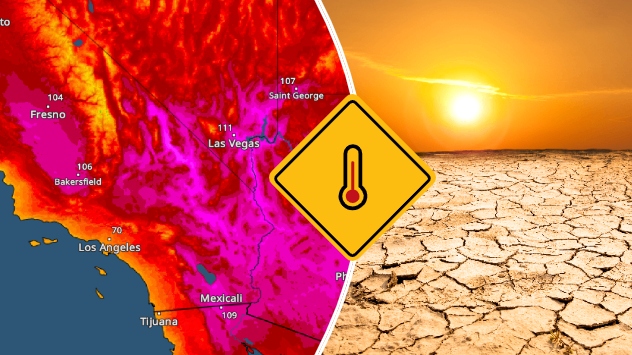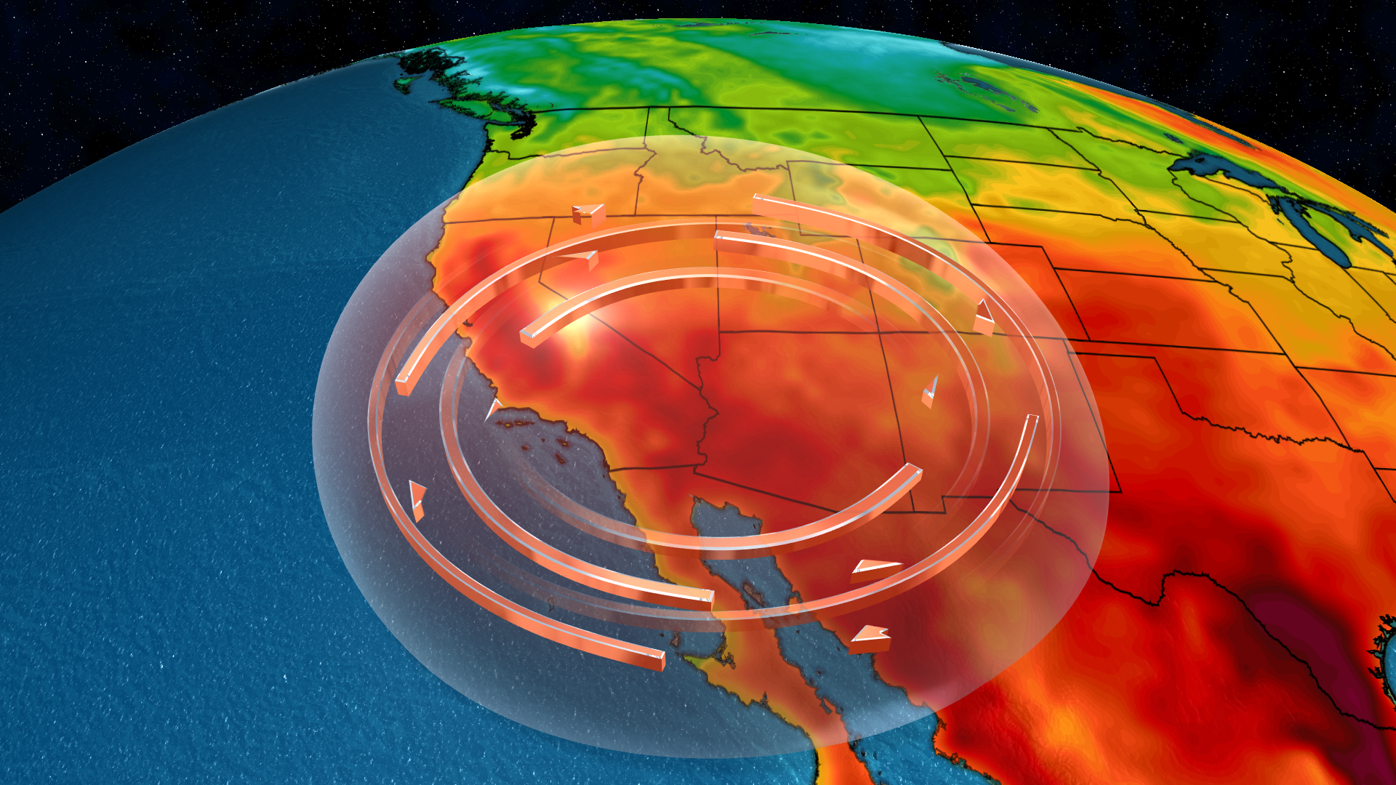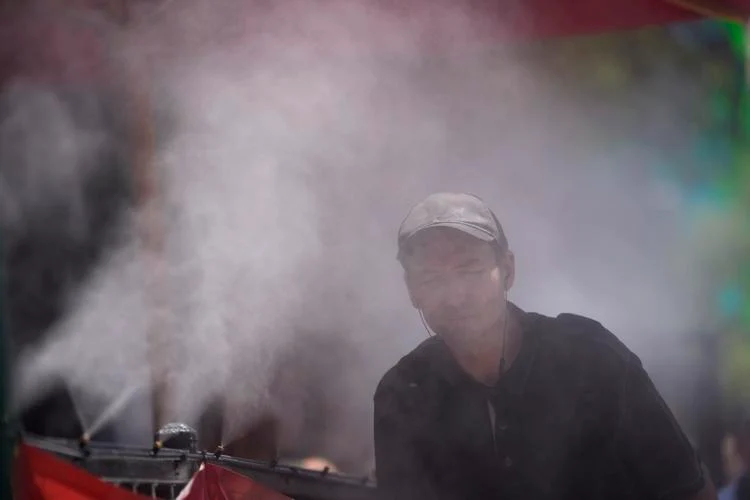The extreme weather conditions in the United States have brought a dual threat of heatwaves in the Southwest and violent storms in the Midwest and Mid-Atlantic. Las Vegas reached a record high of 111 degrees on Thursday, marking the earliest date the city has ever experienced such scorching temperatures, according to the National Weather Service (NWS). This unprecedented heatwave isn’t confined to Las Vegas; it extends across California and the Southwest, with several large metropolitan areas under “Max HeatRisk” advisories.

Extreme Heat Warnings Issued
The NWS has categorized Las Vegas under the “extreme” heat risk, with Phoenix, Fresno (California), Albuquerque (New Mexico), and El Paso (Texas) just below at “major” heat risk levels. Both Las Vegas and Phoenix are expected to surpass 110 degrees. The NWS’s prediction center warned, “Some areas of hazardous heat may persist into next week,” with record-breaking high temperatures forecasted for parts of interior California, the Great Basin, and the Southwest.
Citizens Asked to Stay Indoors During Peak Heat Hours
The intense heat is prompting excessive heat advisories across much of California, urging residents to avoid strenuous outdoor activities during peak heat times and to never leave children or pets in unattended vehicles. “Car interiors will reach lethal temperatures in a matter of minutes,” the NWS cautioned. The extreme heat spans a vast area, including Utah, where temperatures from 104 to 108 degrees were anticipated on Thursday. Parts of Nevada faced even higher temperatures, potentially reaching 114 to 116 degrees. Southern Texas, already experiencing unseasonably hot conditions for weeks, also remained in the triple-digit temperature range, affecting areas like El Paso and the Rio Grande Valley.
Tornadoes and Severe Storms Ravage the Midwest and Mid-Atlantic
While the Southwest battles record heat, the Midwest and Mid-Atlantic regions are dealing with severe storms and tornadoes. At least one person was killed, and several others were injured in powerful storms that swept through these areas on Wednesday, causing significant damage. Tornadoes were reported in Virginia, Maryland, West Virginia, Ohio, and Michigan. In Livonia, Michigan, a storm with 90-95 mph winds toppled a tree onto a home, killing a toddler and injuring his mother and her infant.
Maryland saw at least five injuries from tornadoes, particularly in the Gaithersburg area, and significant damage in Baltimore. The storms’ severity was fueled by a warm front across the Potomac River, which created conditions conducive to tornado formation. “This was not your run-of-the-mill severe weather event,” said Connor Belak, a meteorologist at the NWS’s Baltimore-Washington office. In Ohio, a suspected tornado hit Frazysburg, causing debris-filled streets and minor injuries, prompting local authorities to set up an emergency shelter. Tornado sightings were also reported in Knox County, though damage was not extensive.
Severe Weather Forecast Across the Country
The severe weather threat isn’t over, with strong storms expected to develop across the country. The southern Plains and mid-Atlantic regions, as well as the Florida Peninsula, are at risk of heavy rain and flooding. Damaging wind gusts of 60-70 mph are forecasted for western Oklahoma and the eastern Texas Panhandle, with isolated wind damage possible from New York to the Carolinas. Central and eastern Florida face 55-65 mph wind gusts and potentially damaging hail. Coastal flood advisories were issued for Baltimore and New York, warning of rising waterways and flooding in low-lying areas. “New Yorkers should expect a period of heavy rain and thunderstorms sometime late tonight through the Thursday morning commute,” stated the city’s Department of Emergency Management.

Power Outages in Various Regions
In Livonia, Michigan, residents were caught off guard by a sudden tornado that hit around 3:30 p.m. Lisa Allen, a Livonia resident, described the suddenness of the event: “It came on very suddenly… I better get in the basement… and it was over. It came and went very fast.” Livonia officials confirmed that there was no warning from the NWS about the approaching tornado, referring to it as a “spin-up storm.” The extreme weather conditions have left more than 13,000 utility customers without power across Michigan, with the majority of outages in the southeast region. The combined heatwave and storm threats highlight the volatile and dangerous weather patterns currently affecting the United States.
